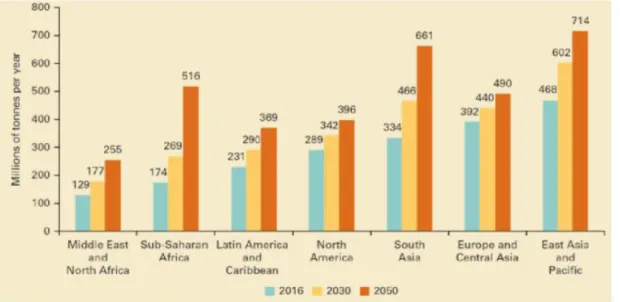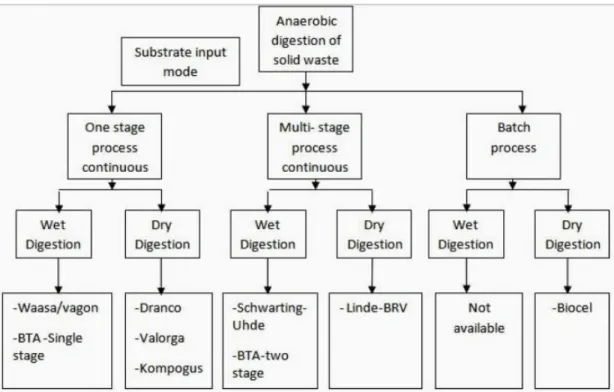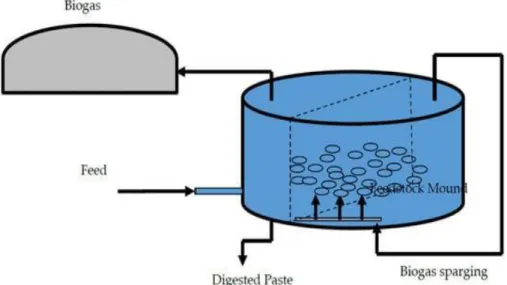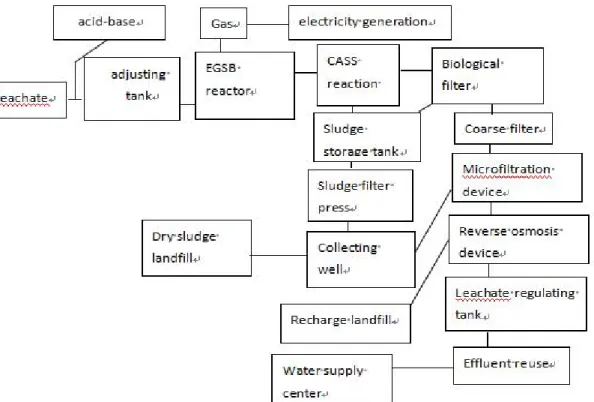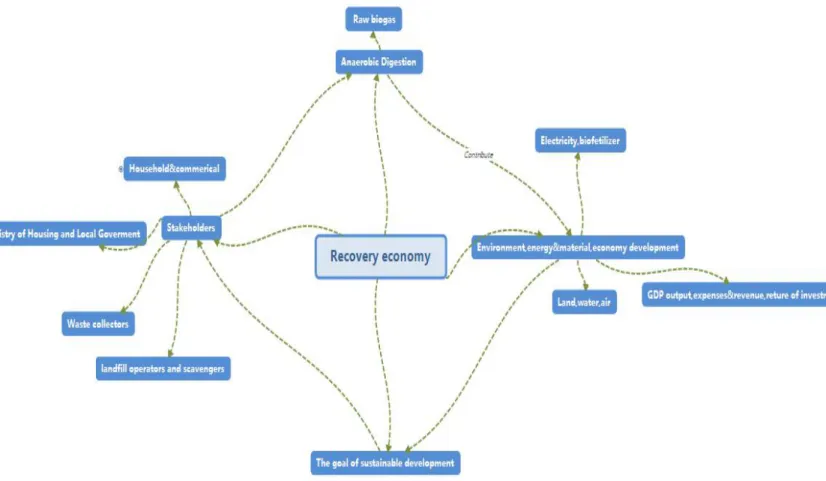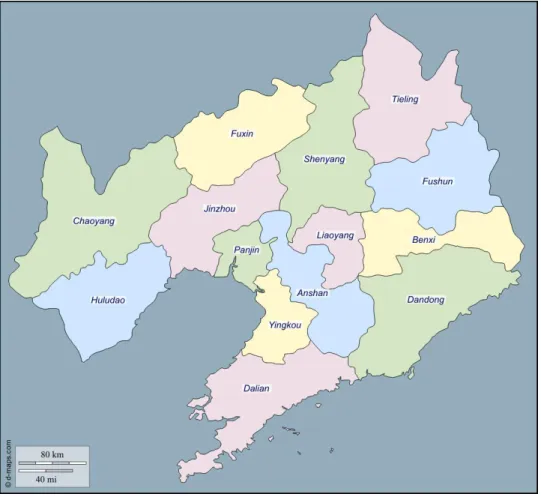INTRODUCTION
Municipal Solid Waste (MSW)
Organic Fraction Municipal Solid Waste (OFMSW)
Problem Statement
Objectives
Hypothesis
Scope of the Project
LITERATURE REVIEW
Introduction
Sanitary landfills are the most used, accounting for 60.32% of the total amount of transportation; incineration is mostly limited in coastal areas, accounting for 37.5% of the total amount of transport; composting has a good effect, but it is only selectively used in some areas, with great restrictions, accounting for only 2.18% of the total amount of transport. In addition, the Chinese government spends a large part of each year on household waste management and public cleaning.
Issues on waste disposal and environmental impact in China
The annual production of municipal solid waste in China is nearly 150 million tons, and it is increasing by about 8% every year. A large amount of waste and sewage seeps into the ground from the surface, causing serious pollution of the atmosphere, soil and water environment and seriously endangering human health.
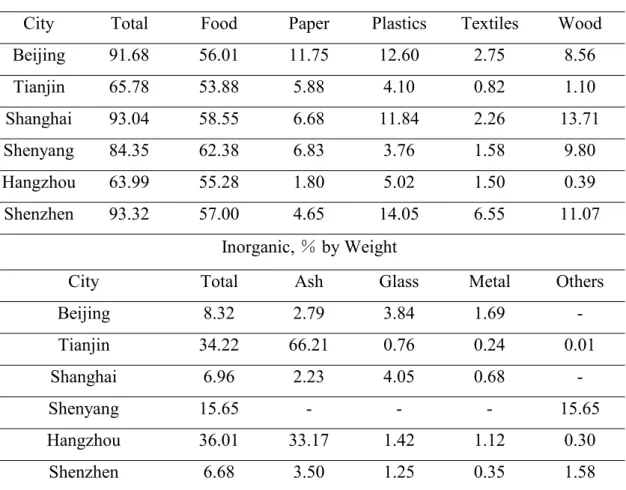
OFMSW by anaerobic digestion
- Treatment by anaerobic digestion
- Improvement of anaerobic digestion
- Feasibility Study on Anaerobic Digestion
- Solution of leachate problem
- Control physical and chemical conditions on
- Resource recovery from OFMSW and its contribution
The main characteristic of the dry anaerobic digestion process is that the solid content of the digested material is between 20% and 40% due to the low moisture content of the food waste. Therefore, the dry anaerobic digestion reactor has the characteristics of small volume and large capacity. Due to the characteristics of anaerobic digestion of municipal solid waste (MSW), such as difficult mixing, high solid content and inhibitory activity, the wave process was developed for all types of MSW in the late 1980s.
The BRV anaerobic digestion process has become the newest anaerobic digestion process in Germany (Vandevivere, Baere and Verstraete, 2003). Europe is the most popular area in the world to treat biomass waste through anaerobic digestion technology. The dissolution of oxygen and the presence of oxidising agents (iron ions, potassium dichromate ions, sulphate, etc.) will cause rapid changes in the anaerobic digestion environment (Agarwal and Bui, 2019).
The influence of the pH value on anaerobic digestion and the control of the pH value is an important factor affecting the vital activities of anaerobic digestion microorganisms.

Significance of resource recovery from OFMSW by Anaerobic digestion. 22
In order to fundamentally solve the problem of energy shortage and shortage in China, meet the increasing demand for modern social development, protect the environment and achieve the goal of sustainable development, we can not only improve energy use efficiency, but also accelerate the development and use of renewable energy. Renewable energy is not only an important development in building a resource-saving society, but also the basic requirement for establishing a good ecological environment and a comfortable abode for human beings. Renewable energy is clean and environmentally friendly, and the development and use process will not increase greenhouse gas emissions.
The development and utilization of renewable energy plays an indispensable role in energy supply, environmental and ecological protection, the reduction of greenhouse gas emissions and the handling of climate change. Renewable energy is widely distributed, and each region has certain conditions for the development and utilization of renewable energy. The development and utilization of renewable energy is mainly the use of local natural and human resources, which is of great importance to promote local economic development.
The rapid development of renewable energy has become the main support of new economic growth, which can effectively promote the development of various related industries.
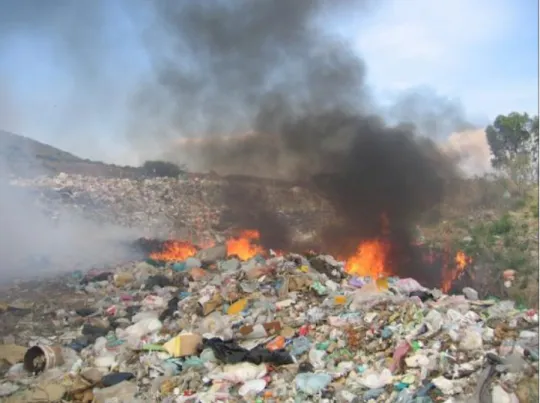
Economic
Summary
According to (Kelly Orhoro, 2017), the most suitable total solid for the best biogas production is 10%, and the reduction of total solid is very important to increase the efficiency of biogas production. Buswell created an equation to estimate the anaerobic degradation products of generic organic material with the chemical composition CcHhOoNnSs. The Buswell equation can be used to estimate biogas composition. The focus of the project is the analysis of the impact of air, water and soil and the sustainability of the contribution of anaerobic metabolism to the environment.
Environmental (avoidance of carbon dioxide; area required for landfilling organic waste; volume of leachate) and energy (generation of electrical energy) economic (sale of renewable energy and biofertilizers) evaluation of the life cycle assessment from waste to power plant through use of food waste to bio- energy. From the above theoretical calculations, the study on the characterization of food waste with the potential performance of the biogas plant for anaerobic digestion is discussed in the Environment, Energy and Economic and Technology aspect. Protect the land and promote sustainable land use of the landfill, in which OFMSW uses anaerobic digestion.
Therefore, maintaining a constant temperature environment is very important for the stability of the cooking process.
METHODOLOGY
Introduction
Study Area
Research Design Process
At the end of the discussion, the environmental and economic evaluation data obtained will be used to evaluate the potential and the feasibility of the amount of energy to be applied in Liaoning. The categorization of the landfill waste based on the origin, composition, toxicity and the management that can reflect the performance of the energy generation. The fertilizer and leachate savings generated by conventional treatment of the landfill in Liaoning Province are calculated according to equation 20 and equation 23.
Since AD has a very low and harmless disposal method for the food waste, the increasing amount of waste tends to make. Food waste is used as the raw material of the digester to promote sustainable pollution control and energy recovery with the efficient degradation of organic waste. Through proper selection of microorganisms, the key to effective biogas production lies in the environment of the digester.
Verstraete, “Types of Anaerobic Digester for Solid Waste,” in Biomethanization of the Organic Fraction of Municipal Solid Waste, J. Peracetic Acid Oxidation as an Alternative Pretreatment for Anaerobic Digestion of Waste Activated Sludge, Bioresource Technology, Volume 102, Issue 5, 2011,.
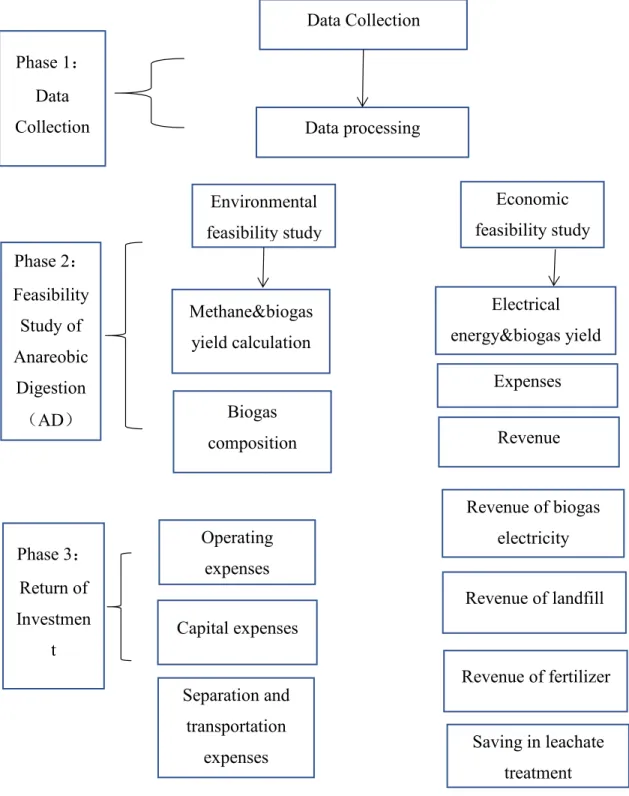
Waste Characterisation in Liaoning Province
Biogas and bio fertilizer recovery
- Biogas composition
- Volume of biogas and CH 4 gas generation
- Bioenergy and biofertilizer potential
- Environmental protection: avoidance in CO 2 , leachate
- Economic analysis
The waste water discharged by anaerobic digestion is valuable, which is conducive to the production of biological fertilizers. In China, recycling organic municipal solid waste through anaerobic digestion can make a significant contribution to environmental sustainability, expansion of renewable energy and positive economic development. Improved anaerobic digestion of food waste by supplementing trace elements: role of selenium (VI) and iron (II). 2009) 'Anaerobic digestion and energy', Valorgas Seventh Framework.
Thermophilic anaerobic digestion: improved and sustainable methane production by co-digestion of food and lignocellulosic waste', Energies, 11(8). National Conference on Recent Advances in Civil Engineering (NCRACE-2013) Anaerobic Digestion of Municipal Solid Waste: A Critical Analysis. Technology overview of biogas production in anaerobic digesters: a European evaluation of research and development.;.
Anaerobic metabolism of food waste–. Improving acidogenic fermentation for volatile fatty acid production from food waste: Effect of redox potential and inoculum', Bioresource Technology.
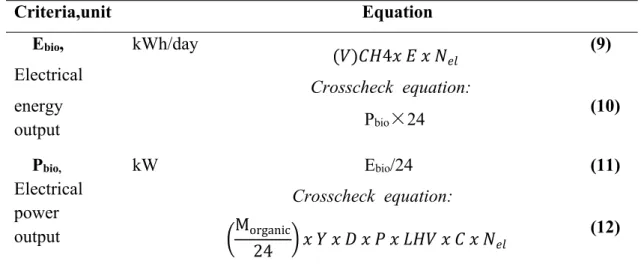
RESULTS AND DISCUSSION
Introduction
Basic characterization result from data analysis
In contrast, more biogas production will result in less surplus production of biofertilizers from the following two tables, the range required by the standard experiment and the basic data on the movement content and the input of our experimental data.
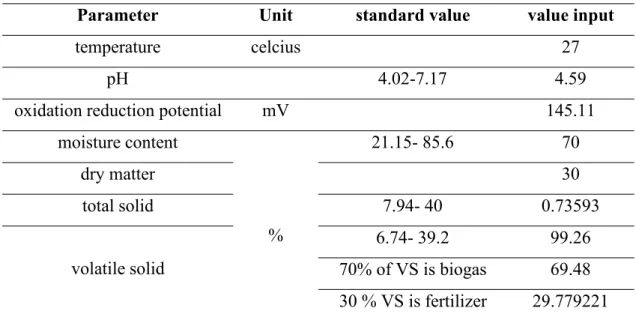
Electrical Energy-Power and Biofertilizer Generation
Environmental Analysis
Economic Analysis
In the economic evaluation, the costs for the waste in the energy plant are mainly divided into investment costs and operating costs, where in this project only the capital expenditures are included and also the operating cost, which is the result of a complex calculation of the balance according to the definition, CAPEX. which includes large purchases that are planned to use the asset for a long period, while OPEX includes the day-to-day expenses incurred in a company to keep the industry running. Briefly, the CAPEX expenditure for this project includes RM1080 million/year while the OPEX expenditure includes RMB 180 million per year (refer to Table 4.9 and Table 4.10). It is clearly shown that the project is sustainable and very feasible with such a large amount of food waste, stable net profit margin and a high amount of ROI that has been done within the calculation in this project.
Within this project, separation and transportation fees, including separation of non-OFMSW waste transport to disposal facilities, involving about 5554960 RMB per day (see table 4.11). The ROI of this project has been calculated, which can also be found via the cumulative expenditure versus cumulative revenue graph shown in Figure 4.1. It can be said that when the net profit is sufficient to cover all initial start-up investments including separation and transportation costs for non-OFMSW, the subsequent year of return on investment is calculated and Table 4.17.
In the first year of operation, the net profit is RMB -7329.409 million and is estimated to recover their investments within 5 years 1 month (see Table 4.17) But the sensitivity analysis of this project, including feed-in tariff and tip, which , is the largest income directed from biogas electricity sales and tips.
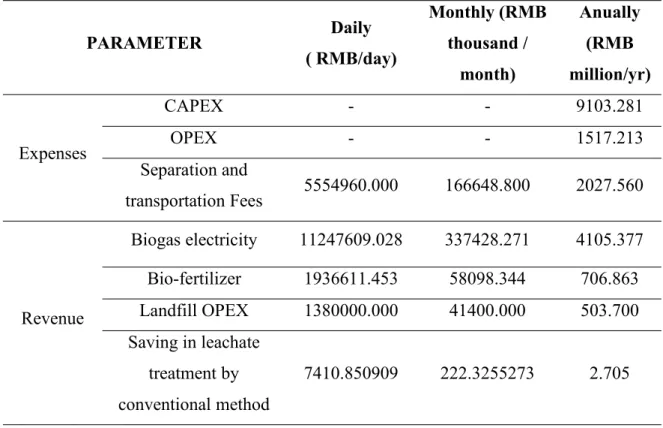
Sustainable Development of WTE (Waste To Energy)
Anaerobic digestion has the potential to reduce the carbon load of wastewater while providing a sustainable biosolids cycle to restore natural soil nutrients and avoid degradation of water and soil conditions by chemical fertilizers. Anaerobic digestion of OFMSW can reduce traditional fossil fuel power generation, which can generate AD renewable energy from OFMSW through heat and methane gas capture, thereby generating electricity and power generation. Because anaerobic digestion has the ability to capture energy, it has great potential to recover biogas and biological fertilizers in food waste treatment.
Consequently, the implementation of multiple biogas facilities for the anaerobic digestion of organic fraction municipal solid waste can encourage a positive paradigm shift in Chinese solid waste management towards a more sustainable practice with an economic income-generating activity. Food waste is a type of easily digestible material that has a sufficient nutrient level required for anaerobic digestion and a suitable range of water, total solids and volatile solids content. In addition, the pH value also plays an important role in maintaining a healthy population of methanogens, so the pH value in the anaerobic digestion tank should be between 7 and 7.5 (Gray, 2008).
Osadolor, Konstantinos Chandolias, Ilona Sárvári Horváth, Mohammad J. 2018) 'A comprehensive overview of anaerobic digestion of food waste: research updates and trends', Bioresource Technology.
CONCLUSION
Moisture content, together with the total amount of solid and volatile solids and the final properties of the waste elements, is also key to determining the efficiency of biogas production. The average residence time of a certain amount of sludge in the tank must be long enough to increase biogas production (Lide and Howard, 2014). A review of anaerobic membrane bioreactors (AnMBRs) for the treatment of highly contaminated landfill leachate and biogas production: efficiency, limitations and future perspectives. 2017) 'Generation and Characterization of Solid Waste at the University of Lagos for Sustainable Waste Management', Waste Management.
The effect of temperature and retention time on methane production and microbial community composition in staged anaerobic digesters fed with food waste. A Global Snapshot from Solid Waste Management to Experimental Determination of the Effect of Total Solids (TS) and Volatile Solids (US) on Biogas Yield,” American Journal of Modern Energy, 3(6), p. Law of the People's Republic of China on the Prevention and Control of Solid Waste Pollution. Available at: https://datatopics.worldbank.org/what-a-waste/trends_in_solid_waste_management.html (Accessed: October 14, 2021).
2020) Environmental, Energy and Economic (3rd) Co-benefit Analysis of Energy and Material Recovery from Organic Fraction of Municipal Solid Waste in Kampar, Malaysia.
